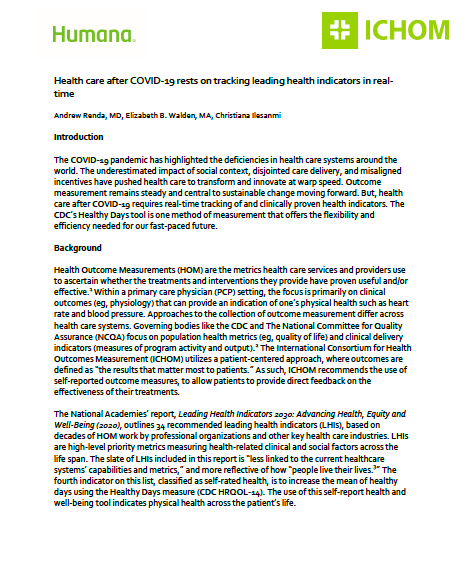- Center on Health Equity & Access
- Clinical
- Health Care Cost
- Health Care Delivery
- Insurance
- Policy
- Technology
- Value-Based Care
Tracking Health Indicators After COVID-19 Requires Real-Time Capabilities
In this white paper from Humana, the authors discuss how the aftermath of COVID-19 will require the frequent use of screeners and tools to assess changes in health status, including health-related quality of life and social health. Taking into account the results that matter most to patients will be key to improving health outcomes.
What will health care require after COVID-19, which exposed disjointed care delivery, health-related social factors, and misaligned incentives? In this white paper from Humana, Andrew Renda, MD, Elizabeth B. Walden, MA, and Christiana Ilesanmi discuss how the swift and sudden innovation forced by the pandemic won't be complete without real-time tracking of health indicators that include patient-reported data to improve health outcomes.
Click on the PDF below to download.

